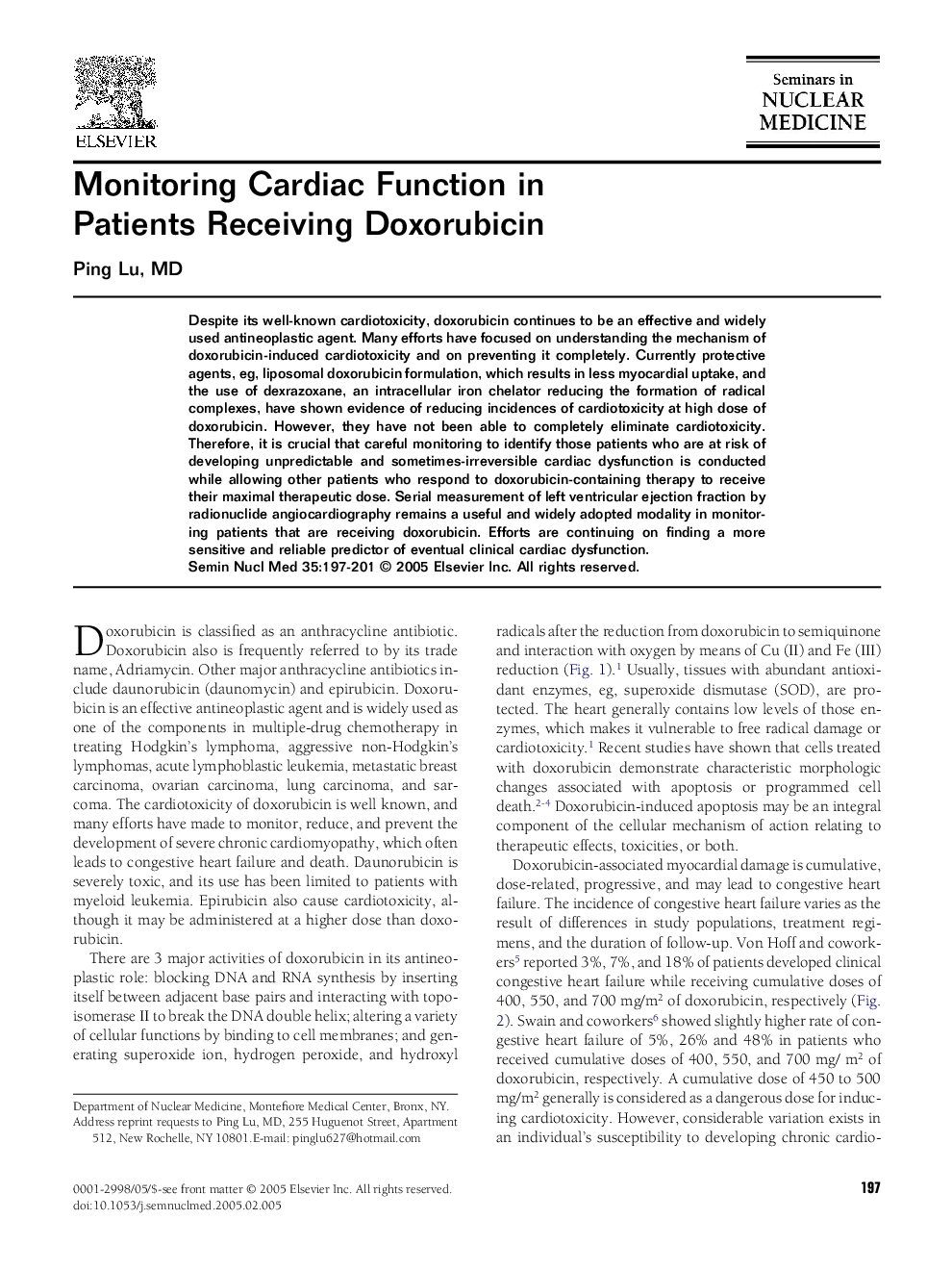| Article ID | Journal | Published Year | Pages | File Type |
|---|---|---|---|---|
| 9394041 | Seminars in Nuclear Medicine | 2005 | 5 Pages |
Abstract
Despite its well-known cardiotoxicity, doxorubicin continues to be an effective and widely used antineoplastic agent. Many efforts have focused on understanding the mechanism of doxorubicin-induced cardiotoxicity and on preventing it completely. Currently protective agents, eg, liposomal doxorubicin formulation, which results in less myocardial uptake, and the use of dexrazoxane, an intracellular iron chelator reducing the formation of radical complexes, have shown evidence of reducing incidences of cardiotoxicity at high dose of doxorubicin. However, they have not been able to completely eliminate cardiotoxicity. Therefore, it is crucial that careful monitoring to identify those patients who are at risk of developing unpredictable and sometimes-irreversible cardiac dysfunction is conducted while allowing other patients who respond to doxorubicin-containing therapy to receive their maximal therapeutic dose. Serial measurement of left ventricular ejection fraction by radionuclide angiocardiography remains a useful and widely adopted modality in monitoring patients that are receiving doxorubicin. Efforts are continuing on finding a more sensitive and reliable predictor of eventual clinical cardiac dysfunction.
Related Topics
Health Sciences
Medicine and Dentistry
Radiology and Imaging
Authors
Ping MD,
